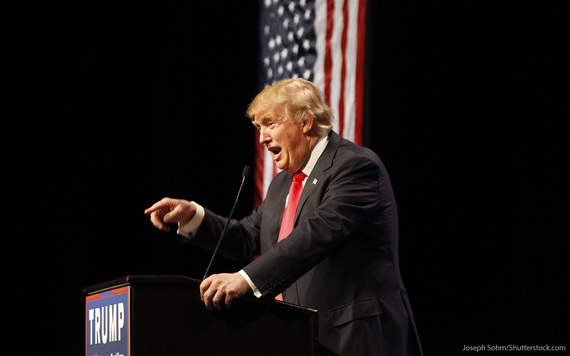By Lia Sestric, Contributor
Republican presidential candidate and GOP frontrunner Donald Trump has big plans for your wallet.
Trump's tax plan looks to make sweeping tax cuts across every income level. However, his tax plan has raised concerns, mostly owed to the logistics behind how the United States would afford lower taxes without making large cuts in numerous areas of the budget.
Here's a look at Donald Trump's tax plan -- and what it could mean for your money.
Related: Nearly 1 in 3 Americans Say Donald Trump Is the No. 1 Presidential Candidate for Their Money
Who Benefits From Donald Trump's Tax Plan?
Donald Trump's tax plan looks to trim the current seven income tax rates into three brackets, 25-20-10, according to a report by the Tax Policy Center, which provides independent analysis of tax issues. The brackets would make a considerable cut to the top rate of 39.6 percent that exists today.
Additionally, Trump's plan would nearly quadruple the standard deduction of $6,300, raising it to $25,000 for single filers and $50,000 for married couples. He's also looking to repeal the estate tax and the alternative minimum tax.
Although Trump's tax cuts will benefit most Americans, the top 0.1 percent of taxpayers will get the biggest piece of the tax cut pie. Americans making $3.7 million or more per year would see an average tax cut of $1.3 million under Donald Trump's tax plan. Conversely, Americans in the bottom 20 percent of income would see an average tax cut of $128.
The Cost of Donald Trump's Tax Plan
Donald Trump and taxes don't get along well. While the Republican presidential candidate is adamant about making cuts, his plan comes at a high cost.
Trump's plan could reduce federal revenues by $9.5 trillion over 10 years, before accounting for interest costs and macroeconomic effects, according to the Tax Policy Center's "Analysis of Donald Trump's Tax Plan."
While this deficit could be partially offset by tax revenues from economic growth, Tax Policy Center claimed Trump's tax policy would require some tax increases and spending cuts.
However, Trump said in an April 2016 Washington Post interview that he could eliminate the United States' $19 trillion debt in eight years. When asked if he would consider tax increases to solve the debt, Trump said, "I don't think I'll need to. The power is trade. Our deals are so bad."
Without some tax increases, it is unclear how Trump will afford to cut income taxes while eliminating the U.S. debt.
Interest Rates to Rise Under Donald Trump
Donald Trump's plan could drive up interest rates and increase the national debt, offsetting the economic benefits of his tax plan, reported the Tax Policy Center. Higher rates would cut savings and raise borrowing costs for Americans.
So while Donald Trump's taxes might benefit most Americans in the short term, it comes at a high cost. Without substantial cuts and some tax increases, Trump's plan could increase the U.S. deficit and drive up rates in the long term.
This article, Donald Trump's Tax Plan: Can You Afford to Have Trump in Office?, originally appeared on GOBankingRates.com.
More from GOBankingRates:

